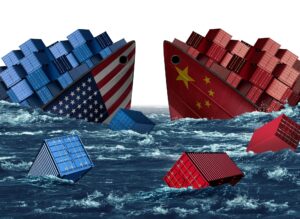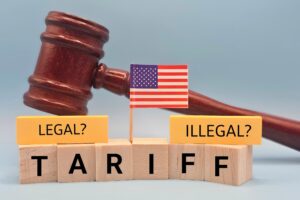On July 27, the US and EU reached a trade deal that may have avoided a potential transatlantic tariff war. In particular, the parties reached a framework for an arrangement that will set 15% on most EU (European Union) imports. The amount is down from the 30% tax that Trump threatened on EU goods earlier this month. Certain products, like pharmaceuticals, chemicals, and aircraft components, would not be impacted by the tariffs. The deal also includes the EU purchasing $750 billion in energy from the US and $600 billion in US investment. With the EU being one of the largest trading partners of the US, the agreement will significantly impact international shipping.
How Did The Trade Deal Come To Be?
The deal was made after a back-and-forth between the US and countries in the EU that lasted years. During Trump’s original presidency, he imposed a 25% tariff on steel and 10% on aluminum imports from the EU. The EU responded by enforcing levies on $3.2 billion worth of US goods. In Trump’s second presidency, he threatened a 30% tax on all EU goods and a now-cancelled 200% tax on alcohol. The EU then announced counter-tariffs on $100 billion worth of US goods, including soybeans and cigarettes. After further tariff delays, the EU called for emergency talks, eventually leading to the July 27 deal.
European Commission President Ursula von der Leyen noted, “This deal provides a framework from which we will further reduce tariffs on more products, address non-tariff barriers, and cooperate on economic security.” Despite the agreement stabilizing current trade relationships between the US and EU, the final deal has yet to be made. The goal behind Trump’s imposing tariffs on the UK is part of a broader strategy to reduce trade imbalances. There is also a push to bring manufacturing and businesses back to the US to stimulate the economy. Trump has made similar agreements with other trade partners like Japan, Indonesia, and the UK before the August 1 deadline.
What Was The Reaction As The US and Europe Reached A Trade Deal?
In 2024, the US imported nearly $606 million in shipments from the EU, making it the US’s largest trade partner. The announcement of a deal led to a generally positive response from importers and exporters from all countries involved. Trump said, “It was a very interesting negotiation. I think it’s going to be great for both parties.” European leaders also applauded the agreement for bringing clarity, stability, and predictability to the trading relationship. Despite the positive response, there is still a fear that the 15% tariff will raise the cost of shipping. This is not only for shippers and international/domestic carriers, but also for customers.
While tariffs can be stressful, they should not stop the importation of cargo into the US. The shipper should, however, take the proper steps to avoid delays and supply chain disruptions. Along with being current with tariffs and regulations, speaking to a customs broker is an ideal way to prepare. Customs Brokers are intermediaries between shippers and the US CBP (Customs and Border Protection). They are licensed individuals or corporations who arrange the customs clearance process on behalf of the importer. Brokers do this by providing documentation, ensuring regulatory compliance, and more. Contact A1 Worldwide Logistics at 305-440-5156 or info@a1wwl.com to speak to our brokers about importing anywhere globally.





